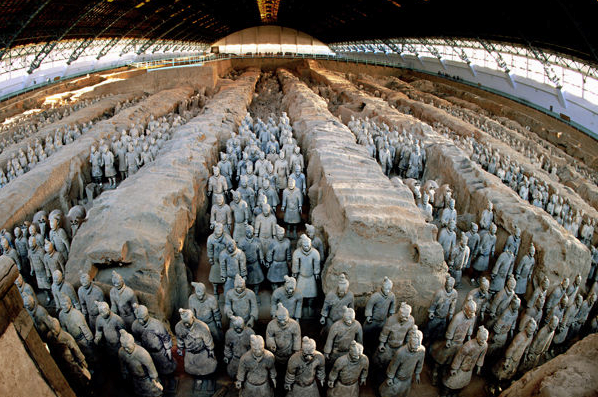
Where is the Terracotta Army Now?
While many associate China's historical treasures with Beijing, the Terracotta Army is not found in the Forbidden City. This article clarifies the location of this remarkable archaeological find and provides insights into its significance.
The Forbidden City vs. The Terracotta Army
- The Forbidden City: Located in the heart of Beijing, the Forbidden City, now known as the Palace Museum, was the imperial palace for centuries, housing emperors from the Ming to the Qing dynasties. It stands as a testament to Chinese imperial power and architectural prowess.
- The Terracotta Army: Discovered in 1974, the Terracotta Army is a collection of thousands of life-size clay soldiers, horses, and chariots buried with Qin Shi Huang, the first emperor of China. This UNESCO World Heritage site is situated in Xi'an, Shaanxi province, roughly 1,100 kilometers southwest of Beijing.
The Terracotta Army's Home: Emperor Qinshihuang's Mausoleum Site Museum
The Terracotta Army is housed in the Emperor Qinshihuang's Mausoleum Site Museum (秦始皇陵博物院), built specifically to protect and display this incredible find. The museum is located approximately 1.5 kilometers from the actual burial mound of Emperor Qin Shi Huang.
- Location: Lintong District, Xi'an, Shaanxi province, China.
- The Museum Complex: The museum complex is vast and comprises several pits where the terracotta figures were discovered, exhibition halls displaying chariots, weapons, and other artifacts, and a research center dedicated to the ongoing study and preservation of the Terracotta Army.
- Accessibility: The museum is open to the public and easily accessible from Xi'an city center by bus or taxi.
Visiting the Terracotta Army
A visit to the Terracotta Army is a journey back in time, offering a glimpse into the military might and artistry of ancient China.
- Awe-inspiring Scale: The sheer number of life-size figures, each with unique facial features and positioned in battle formation, leaves visitors awestruck.
- Historical Significance: The Terracotta Army provides invaluable insights into the military practices, social structure, and artistic skills of the Qin Dynasty.
- Ongoing Discoveries: Excavations and research continue to this day, constantly revealing new information and adding to the allure of this historical treasure.
FAQs
Q1: Can I see the actual tomb of Emperor Qin Shi Huang?
A: While the Terracotta Army is part of the emperor's tomb complex, the main tomb itself remains unopened. Archaeological and cultural preservation considerations have led to the decision to leave the tomb undisturbed for now.
Q2: Are photographs allowed inside the museum?
A: Yes, photography is generally permitted within the museum, except in certain areas where flash photography is prohibited to protect the delicate pigments of the artifacts.
Q3: Is there anything else to see near the Terracotta Army?
A: Yes, Xi'an is a city steeped in history and offers many other attractions, such as the ancient City Wall, the Giant Wild Goose Pagoda, and the Shaanxi History Museum.